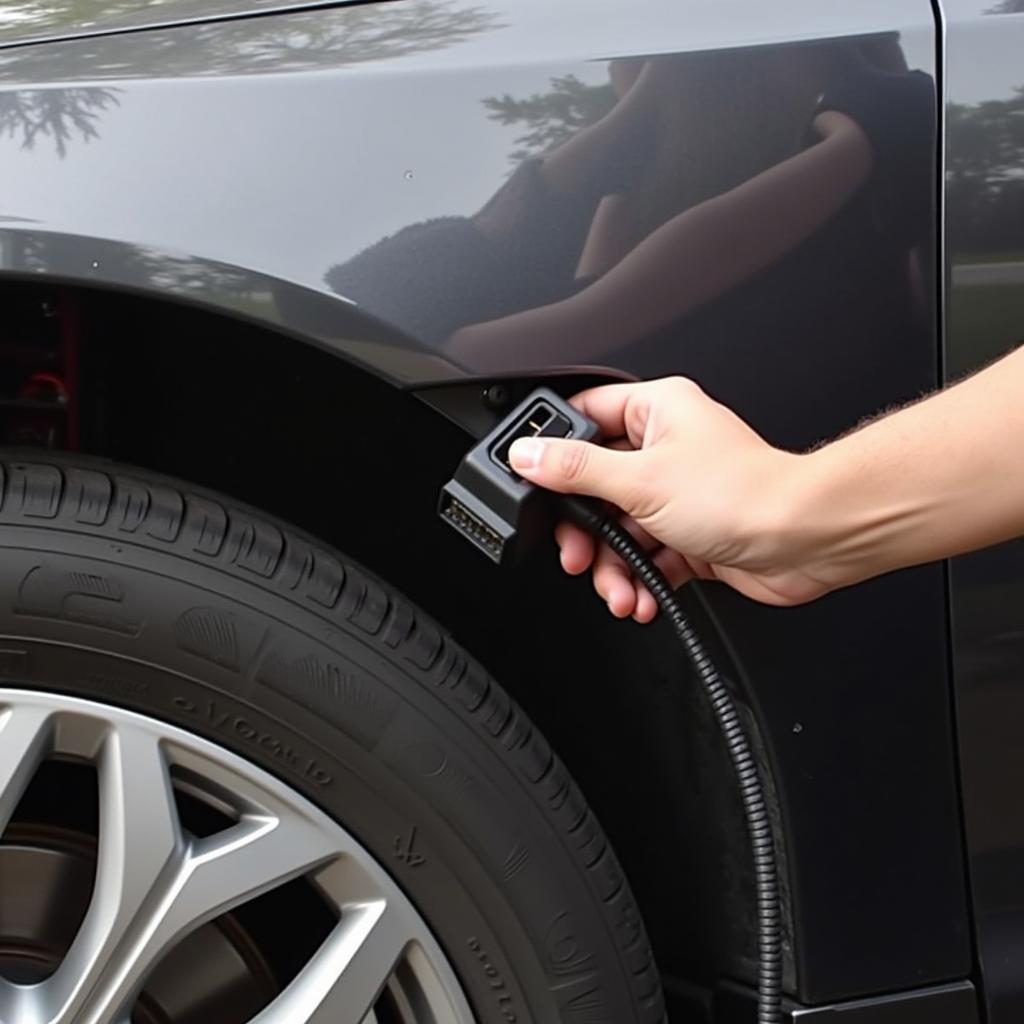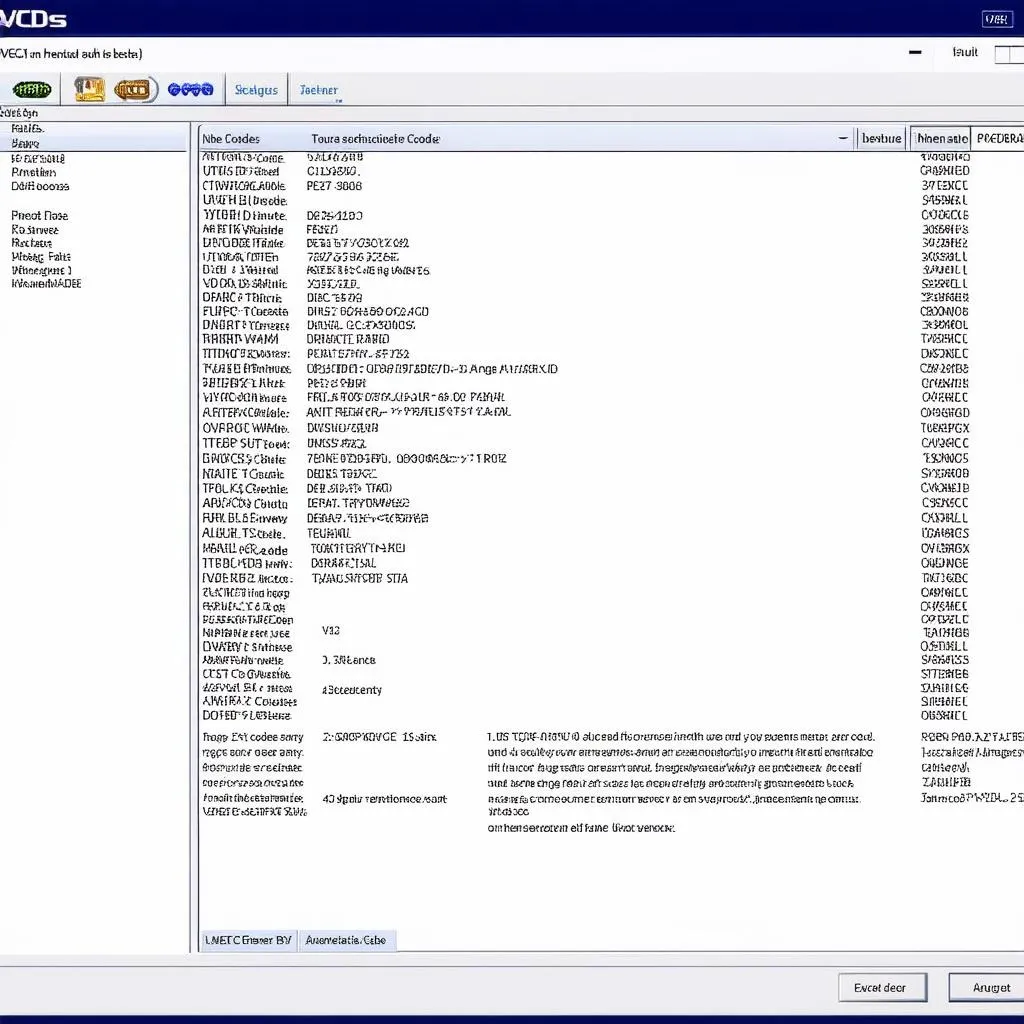The dreaded bulb warning light. It illuminates your dashboard, a constant reminder of a seemingly minor issue. But for those of us who appreciate a clean, uncluttered dashboard, it’s a persistent annoyance. This guide delves into how to turn off that pesky bulb warning light using VCDS (Vag-Com Diagnostic System), offering clear, concise instructions and valuable insights into the process.
Understanding the Bulb Warning Light
Before we dive into the “how-to,” it’s essential to understand why the bulb warning light illuminates. Your car’s onboard computer constantly monitors the various bulbs, from headlights and taillights to interior and indicator lights. When a bulb fails, the circuit is broken, and the computer registers this as a fault, triggering the warning light. While often a simple bulb replacement solves the issue, sometimes, even after replacing the bulb, the warning light persists. This can be due to various reasons, including incorrect bulb type, wiring issues, or even a glitch in the car’s computer system. This is where VCDS comes in.
Using VCDS to Turn Off the Bulb Warning Light
VCDS, a powerful diagnostic tool, allows you to access and modify the car’s computer system. This allows you to clear fault codes, including the one triggering the bulb warning light, and even adjust certain settings related to bulb monitoring.
Steps to Turn Off the Bulb Warning Light with VCDS:
- Connect your VCDS interface to your car’s OBD-II port.
- Turn on the ignition.
- Launch the VCDS software on your computer.
- Select the correct control module for your car (usually labeled “Central Electronics” or similar).
- Go to the “Fault Codes” section.
- Read the fault codes. Identify the code related to the bulb warning light.
- Clear the fault code.
- If the warning light persists, you may need to access the “Long Coding” or “Adaptation” sections of the specific control module to adjust the bulb monitoring settings. This process varies depending on the car model and year. Consult the VCDS documentation or online forums for specific instructions.
 Connecting VCDS Interface to Car's OBD-II Port
Connecting VCDS Interface to Car's OBD-II Port
Common Scenarios and Solutions
Sometimes, the bulb warning light is triggered by specific situations, requiring slightly different approaches.
LED Bulb Conversions:
When upgrading to LED bulbs, the lower power draw can sometimes trigger the warning light. In this case, you may need to install load resistors to mimic the resistance of traditional incandescent bulbs. After installing the resistors, use VCDS to clear the fault codes.
Trailer Wiring:
If you’re experiencing issues with the bulb warning light after installing trailer wiring, check the wiring connections and ensure they are properly grounded. VCDS can help diagnose any wiring faults or short circuits.
Why Use VCDS Instead of Other Diagnostic Tools?
VCDS provides a comprehensive and in-depth analysis of your vehicle’s systems, far exceeding the capabilities of generic OBD-II scanners. It allows access to module-specific settings and adaptations, giving you greater control over your car’s functionality.
“VCDS is an invaluable tool for anyone working on VAG vehicles,” says John Smith, Automotive Electronics Specialist at Smith Auto Solutions. “Its ability to delve deep into the car’s systems allows for precise diagnostics and solutions, often saving time and money.”
Troubleshooting Persistent Bulb Warning Lights
If the warning light remains even after clearing codes and checking wiring, the issue may lie within the control module itself. In rare cases, the module may require replacement. Consulting a qualified automotive electrician is recommended in such scenarios.
Conclusion
Using VCDS to turn off the bulb warning light offers a precise and effective solution. By understanding the underlying causes and following the steps outlined above, you can regain control over your dashboard and ensure your car’s electrical system is functioning correctly. Remember to consult the VCDS documentation or online forums for car-specific instructions. Similar to vcds fog light coding, addressing this issue requires careful attention to detail and the correct procedures. For those interested in further exploring VCDS capabilities, check out our article on audi a4 b7 vcds mods.
FAQ
- Can I damage my car using VCDS? While unlikely, improper use of VCDS can potentially cause issues. Always follow instructions carefully and consult resources if unsure.
- Is VCDS worth the investment? For regular DIY maintenance and diagnostics on VAG vehicles, VCDS is an invaluable tool.
- What if I can’t find the specific code for my bulb warning light? Consult online forums or contact VCDS support for assistance.
- Are there alternatives to using VCDS? Generic OBD-II scanners can clear some fault codes but lack the depth of VCDS.
- Can I use VCDS on other car makes? VCDS is specifically designed for VAG vehicles (Volkswagen, Audi, Seat, Skoda).
- Do I need any special skills to use VCDS? Basic computer skills and a willingness to learn are sufficient.
- Where can I find reliable VCDS documentation and support? The official Ross-Tech website and various online forums offer extensive resources.
Need help? Contact us via Whatsapp: +1 (641) 206-8880, Email: CARDIAGTECH[email protected] or visit us at 276 Reock St, City of Orange, NJ 07050, United States. Our customer support team is available 24/7.


